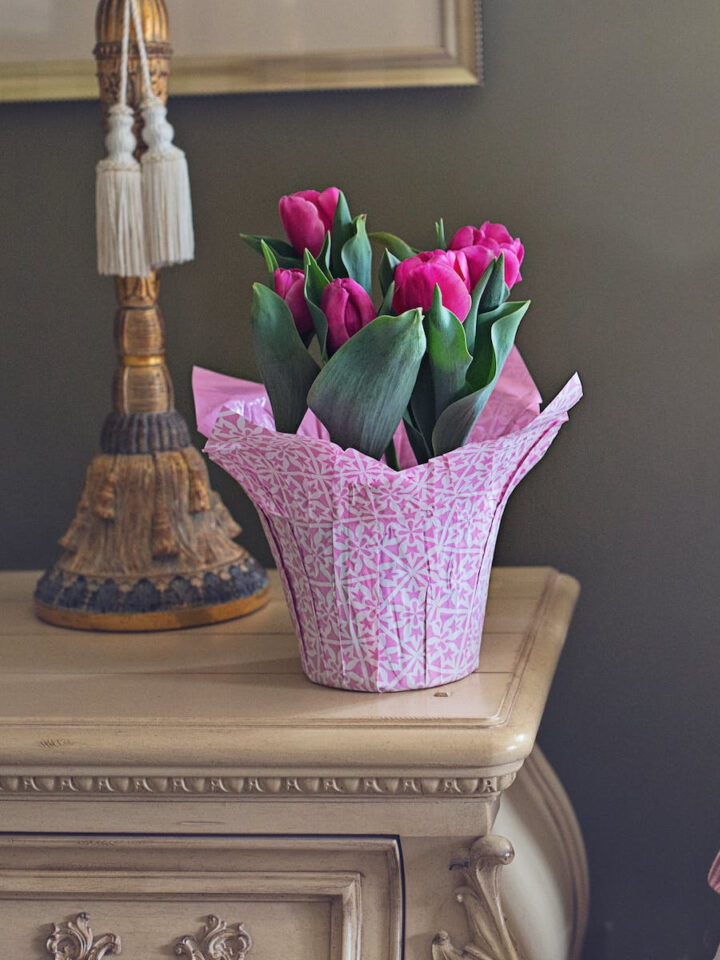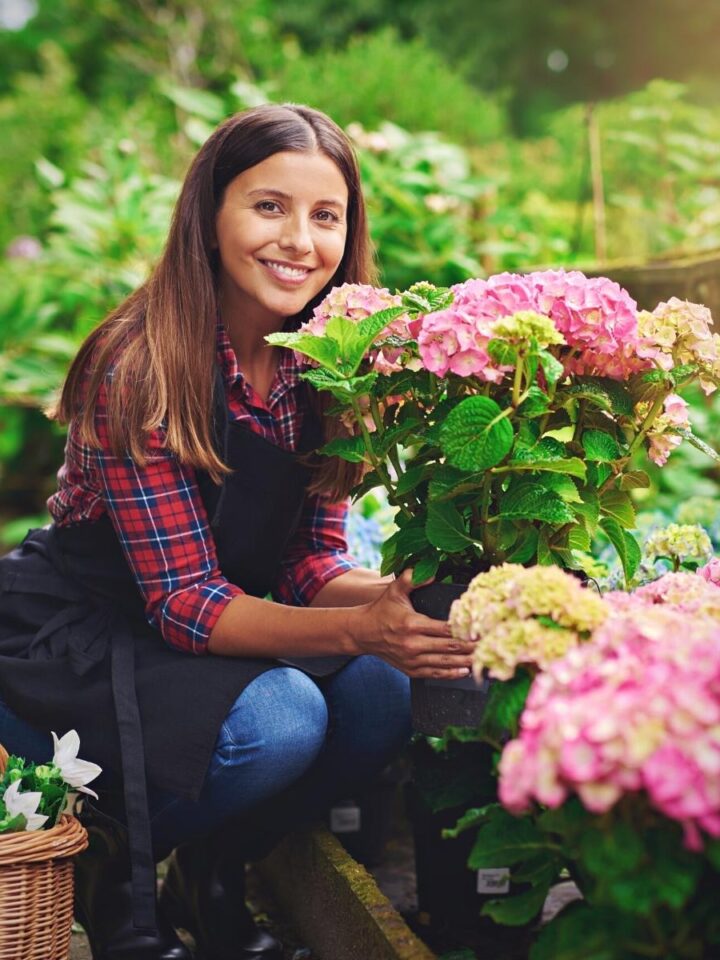This post contains affiliate links, which means I will make a commission at no extra cost to you should you click through and make a purchase. As an Amazon Associate I earn from qualifying purchases.
Gardening Tips For Roses That Actually Work? Rose gardening is a great way to add a little classic elegance to your yard and garden. Roses are relatively easy to grow and don't require a lot of ongoing maintenance. Roses are the most well known and beloved flower in the world.
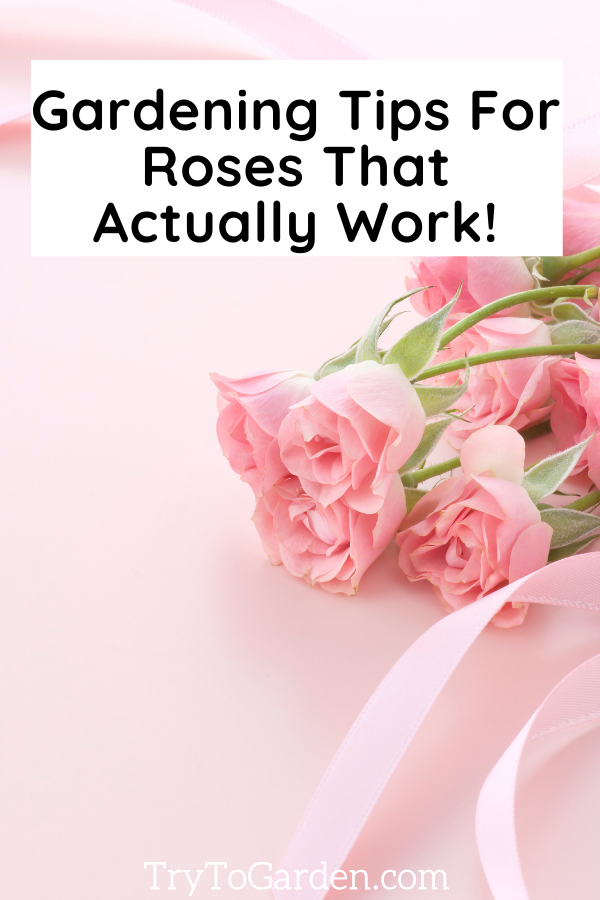
They're not only beautiful, but they have many practical uses, too. They have been used for ages to treat all sorts of ailments. They're also used to making perfumes and for flavoring baked goods and confectionaries.
An Introduction to Rose Gardening
The tannin contained in rose petals can be used to control bleeding. An infusion of rose petals can be used to treat diarrhea. Rose oil and rose water are an ancient Chinese remedy for colon and stomach issues. Roses have been an essential part of medical history.
Roses belong to the same family as plums, apples, and almonds. They are of the family Rosaceae and the genus Rosa. There are thousands of varieties of domestic and wild roses, and they come in a rainbow of colors.
Although hybridizing has created all of these thousands of beautiful varieties, it has unfortunately caused many rose varieties to become weak. When certain features are enhanced, others can decline. If you are looking for medical or health use our tips with roses include going after heirloom varieties.
Today's roses are often less resistant to attack by diseases and other pathogens. This means you'll have to keep an eye on these weaker species, so you can take action if a problem arises.
Roses in history
The oldest known roses lived about forty million years ago. Rose fossils were found in Colorado in the United States that date back about that far. They have been growing naturally for millions of years in most of the northern hemisphere. They grow wild in the United States and Canada, Egypt and India, and even in Siberia! They grow in the southern hemisphere, but they don't seem to be native to that area.
Roses have been cultivated by ancient Egyptians and Chinese, as well as the Grecians and Romans. It is believed the Romans might have brought roses to England and France, and they were being cultivated there by the 15th century. They were then brought to the Americas sometime in the 16th century.
Different ways to use roses
Roses can be used for a lot of different purposes in your yard and garden. You can use climbing roses to accent fences, walls, and arbors.
Rose bushes can make beautiful accents for lawn edges and corners, along the front or side of your house, and around the mailbox. Certain types of roses can be used as hedges. They can also be planted in a large area to create an entire rose garden.
Roses as a moneymaker
If you grow long-stemmed varieties, you could earn a bit of extra money by selling your roses. You could sell them on your own at flea markets, shop meets, or farmers' markets. You could also sell them to flower shops, but you'll probably make a lot less money from them.
Flower shops usually pay wholesale prices for flowers. But if you sell directly to individuals, you can make more per flower. Still, selling to a flower shop is probably more stable money. Choosing the varieties you wish to plant will likely be difficult.
There are so many to choose from it may be very hard to narrow your selection down. Just remember to stick to a color theme. Don't plant blue roses with pink and yellow roses. Stick to colors that mesh well.
The Perfect Soil Tips for Roses
Roses can be fickle and sensitive plants. Although they're generally not that hard to grow, they often show the signs of problems quickly. Roses often struggle with nutrient deficiencies, so it's essential to keep the soil in the best possible condition.
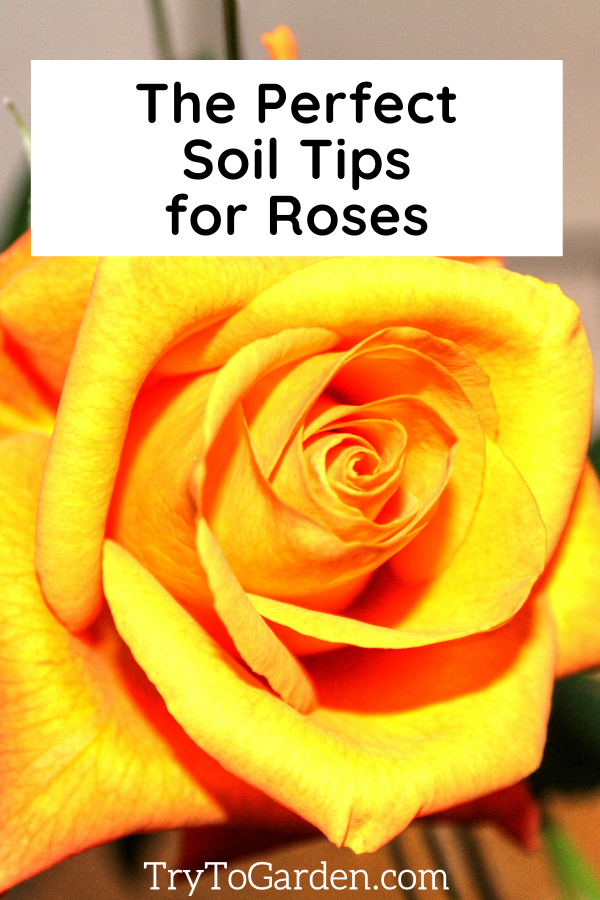
One of the most important tips for roses you can take seriously is to ensure the highest quality soil by adding quality organic material to the soil. You can add backyard or manure composts to the soil and then use rich, organic mulch over the soil's top. The more organic material you add to the soil, the better your roses will probably do.
In addition to providing nutrients and minerals to your roses, a soil rich in organic material will also help keep the biologic system in the soil healthy, which may help prevent diseases.
Beneficial microorganisms need organic matter to feed upon. These microorganisms are important for healthy roses because they can help crowd out pathogens through a "competitive exclusion." In this process, the beneficial microorganisms proliferate far more than the bad ones, or sometimes even eat them!
Think organically with roses
It also helps keep the moisture level in the soil balanced and allows the roses to absorb more of the water the soil receives. Maintaining a good moisture level is very important for roses. They should never be over-watered, but they can't be allowed to dry out, either. Organic material acts sort of like a sponge. It soaks up water and holds it until the plants need it.
Organic material also helps attract earthworms, which gardeners love. Earthworm help aerate the soil, keeping oxygen flowing through it and keeping the biological process moving correctly. Their dung is a potent natural fertilizer, so having them in your garden is like having a constant source of free fertilizer!
Having soil rich in organic matter will make your job much easier. You'll have to water far less often, and you won't have to fertilize very often if the soil is rich in organic material that attracts earthworms. Your roses will grow bigger and stronger, and they won't have as many problems with pests and diseases.
If you don't have a good source of organic material, you can buy organic compost bags at most garden centers.
You can also buy yard waste in many communities. Some communities collect this yard waste and compost it, then make it available to their citizens. This material is often very inexpensive.
You should also check your soil to be sure it has the proper pH balance. Roses need a pH range of around 5.5 to 7.0. You should do a soil test before planting your roses to see if your soil is acidic or alkaline. Then you can make corrections if necessary.
Roses prefer a rich, loamy soil that drains well. You should add leaf mold, peat moss, fine potting bark, or organic compost to all soils, especially if the soil is particularly sandy or full of clay. This will help the soil drain better and hold in just the right amount of moisture for healthy roses.
Choosing Roses for Your Garden
There are thousands of varieties and colors of roses in the world. Choosing the right varieties for you can seem impossible! How can you possibly choose from all of those thousands of types? It can be overwhelming at first.
There are large shrub roses that can be covered in dozens of large, beautiful blooms. These are great even when the blooms fade because they provide a stunning backdrop of rich green. The foliage itself is pretty enough to be enjoyable, even when there are no blooms.
Hybrid tea roses are delicate, classy, and visually stunning. They provide full blossoms that are perfect for cutting and placing in vases. If you want amazing cut roses, hybrid tea roses are a great choice.

If you want to make a visually striking statement outdoors, you might consider climbing roses. They can be trained over arbors, around doorways, and over walkways. They can climb trellises beside walls, and they can be trained over fences. Climbing roses are perfect for creating a romantic garden.
If you don't have a lot of space, you can choose petite roses. They grow on very compact plants and can be neatly tucked away into small corners. They can also be grown in containers to grow them if you have only a patio for growing plants.
How to buy roses
You can purchase your roses in one of three ways. You can buy them in pots, wrapped inside a plastic bag, or bare root. It doesn't matter which way you purchase your roses, but it's probably preferable to avoid those grown in containers because they can end up having their roots grow into a very tight clump that can be damaged when you transplant the rose.
Bare root roses are kept dormant and are stored without soil. Their roots are kept damp by using some wet sawdust, paper, or burlap. Bare root plants are generally planted in early spring, and they tend to adjust well to their new location.
Potted plants often don't adjust quite as quickly. Most plant catalogs and online sources ship bare-root roses, so you should be able to find the varieties you want in this format. Bare root roses are also often cheaper than potted roses.
No matter what, don't automatically buy the cheapest type of roses you can get. Healthy roses are an essential investment. If you buy low-quality roses, it will probably come back to haunt you later.
It would be a significant waste of money to buy roses and plant them, only to have them die a few weeks later.
It's better to spend a little extra up front and have a better chance of having roses that survive and thrive.
What to look for when buying roses
When purchasing your roses locally, be sure to pick a plant with at least three strong stems (or canes). You should be sure to look carefully for any potential signs of disease or pest infestation, and don't buy any plants with signs of damage.
Be sure there are no brown spots or wilted leaves. Also, be sure to look for white roots rather than dull brown or ivory roots. White roots are a sign of good health. Any buds should be fat and bright.
Also, be sure to keep the color scheme in mind when you purchase roses. You should purchase roses in colors that go well together.
You don't want to choose colors that clash because it will make your garden look cheap and less aesthetically pleasing.
How to Tend Your Roses
Growing roses really isn't tough to do. As long as you follow the most basic care rules, your roses can be healthy and beautiful for a very long time. The first step in having healthy roses is to be sure you've chosen a variety that is suitable to your zone.
If a particular type isn't hardy to your zone, then it may not survive. You also need to ensure that your roses get plenty of sun. They need more than six hours of direct sunlight every day to do well.
Roses are greedy eaters. They take large amounts of nutrients from the soil, so you must feed them very often, but lightly each time.
Feeding should be stopped about two months before the first expected fall frost. It would be best if you fed roses with nitrogen, phosphorous, and potassium. Hybrid tea roses, climbing roses, grandifloras, floribundas, and poluanthas all need about ½ cup of 10-20-20 or 10-20-10 on each bush about three times a year.
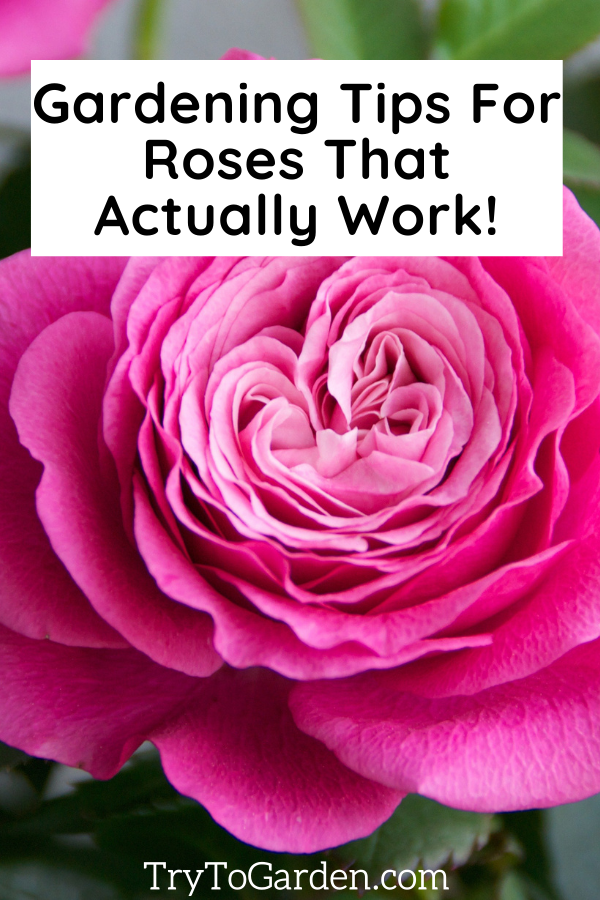
You should apply once in early April, again in late May, and again in early July. You could also add ¼ cup every couple of weeks through July. Miniature roses should receive about a tablespoon of 10-20-20 or 10-20-10 in early April.
Then they should get a soluble 20-20-20 fertilizer in early June. About 1 cup should be poured around the base of each plant. Then they should receive another application of this in early July.
Shrub roses and standard garden roses don't generally need much fertilizer. You only need to give them a good application of general purposes 20-20-20 fertilizer once per year, sometime in early spring. If you have repeat-blooming roses, you can apply another fertilizer dose after the first round of blooming is done.
The American Rose Society has developed a special alfalfa tea recipe for roses. It is generally applied in the fall and releases a particular growth hormone in your roses. To make it, you fill a 32-gallon plastic trash can with 10 cups of alfalfa pellets and water.
Then you steep this for about five days, stirring it daily. You should then add 2 cups of Epsom salts, ½ cup of Sequestrene, and a trace element elixir of your choice. After about three days, this mixture will start to smell, so keep the lid on it.
Large rose bushes should receive about a gallon of this tea, and mini roses should get about ⅓ of a gallon. After you use all of the water, you can add more water to the pellets in the bottom to make a second batch! After the second batch, discard the pellets.
How to water roses
Roses should be watered deeply. They should get at least an inch of water every week. As long as you have given your roses plenty of rich organic material in their oil, you shouldn't need to provide them with more than one inch per week.
Do NOT water lightly and frequently, as this will encourage shallow roots that can cause your plants to die during droughts! Water in the mornings so leaves are dry before dusk; otherwise your roses can get diseases or mold.
Roses need to be groomed regularly. You should remove faded flowers, trim away dead or damaged branches, and prune away brown leaves. For the first two months after you plant your roses, you should remove all buds to establish the plant and encourage it to grow.
Be sure to leave as much foliage on the plant as you can when you cut your first blossoms. If you see any branches that show disease symptoms, cut them back to the healthy part of the plant, then dispose of the affected part in the trash, away from your garden, and NOT in a compost pile!
Winterizing Tips for Roses
Roses can be somewhat delicate, and special care should be taken to ensure survival over the cold winter months. If you live in a very moderate climate with mild winters, you may not have to take any special steps. But in cooler temperatures, your roses should be protected.
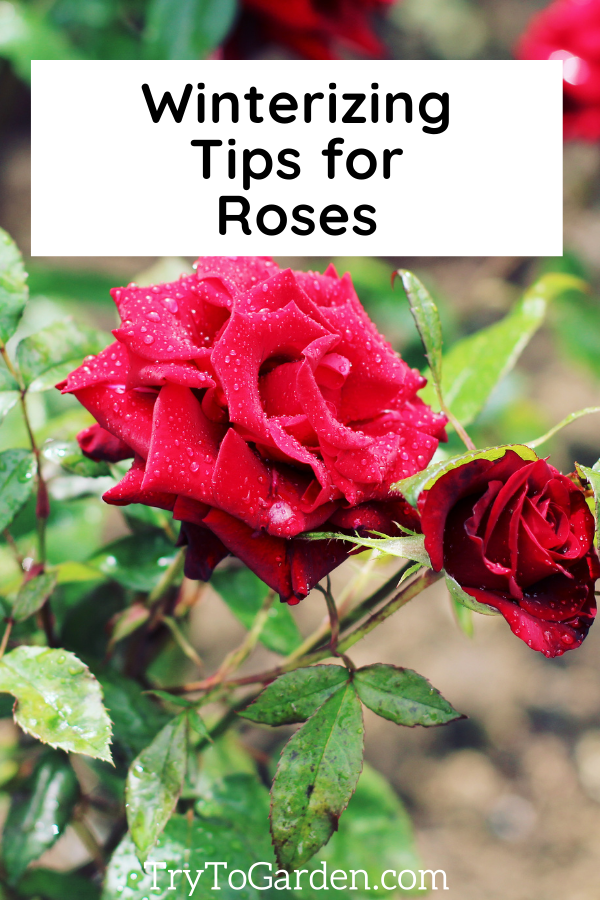
In the fall, you should start gradually watering less and less. This happens over a few weeks, and water is restricted a bit more each week to help toughen the roses' stems. This helps keep the items protected throughout the winter.
When rose hips begin to form, it signals that the plant's growth cycle is finished for the season, and it begins to go dormant for the winter. It would help if you didn't prune or pinch buds at this time because this can encourage new growth at a time when the plant should be shutting down.
Don't remove dead flowers at this time because they should be allowed to form rose hips. Rose hips are the fruit that is formed from dead roses. They are a great source of food for birds in the winter, and they also look quite attractive in a winter landscape.
In zones seven and cooler, most roses will need to be protected during the winter. They must be sheltered from both the cold and the damaging winds. Snow can protect delicate plants because the snow provides a blanket of protection that keeps the soil from becoming too cold.
This helps keep the roots protected from frostbite, yet it also keeps them from causing the roses to go into a premature growth cycle because the roots get too warm. You can cover the bottom part of your roses with about eight or ten inches of compost or mulch to help protect the plant if you don't get a lot of snow. Be careful to use soil from another location because digging soil up from near the plant should hurt its roots.
Clean your roses up for winter
Before you start your winterizing, you should be sure to remove any leaves that are left dead on the plant. You should also pick up any debris that is lying on the ground at the base of your roses and dispose of it by burning it or putting it into the trash. Don't compost any rose debris because it can infect your roses again next year if there were any problems. You can prune any areas you want at this time.
Styrofoam cones are available for protecting roses through the winter. Although these are somewhat unsightly, they can do an excellent job of protecting the plants. You should tie each plant into a bundle before putting the cone around it.
Please don't fill the cone with straw or leaves until after the ground has frozen; otherwise, rodents may burrow into it. You can also use plastic towers filled with water, or you can use chicken wire towers filled with straw or leaves to protect the plants.
How to trench roses
In very cold areas, roses are often trenched for the winter. Old mulch is generally removed from the base of the roses to get rid of any potential diseases. Then the rose canes are tied together using a particular synthetic twine that won't decay.
A trench is dug on one side of the plant, and then a garden fork is used to loosen the soil around the plant. The plant is then turned over into the trench, taking care not to uproot the plant or break it.
Then the plants are covered with soil. In November, about 12" of leaves are added over the top and watered to keep the leaves in place. In early April, the leaves are removed from the plants. Then in mid-April, the plant is stood back up, reversing the original trenching process. This method is effective but a bit dangerous to the plant if you aren't following instructions carefully.
Can you think of anything we forgot to tell the new Rose Gardener? Please share your tips for roses!

